Pharmaciphore Perception, Development, and Use in Drug Design
$109.95
IUL Biotechnology Series, 2
by Osman F. Guner (Editor)
Edition: First
Book Details:
- Series: IUL Biotechnology Series
- Volume: 2
- Binding: Hardcover
- Pages: 560
- Dimensions (in inches): 1.75 x 9.75 x 6.50
- Publisher: International University Line
- Publication Date: March 9, 2000
- ISBN: 0-9636817-6-1
- Price: $109.95
Happy discoveries… Osman F. Güner
PHARMACOPHORE PERCEPTION, DEVELOPMENT,
AND USE IN DRUG DESIGN
edited by
OSMAN F. GÜNER
Contents
Preface xv
List of Contributors xxi
Part I. THE ORIGINS OF PHARMACOPHORE RESEARCH 1
1. Evolution of the Pharmacophore Concept in Pharmaceutical Research 3
Peter Gund
Part II. ANALOG-BASED PHARMACOPHORES 13
2. Manual Pharmacophore Generation: Visual Pattern Recognition 17
Osman F. Güner
3. Pharmacophore Definition Using the Active Analog Approach 21
Denise D. Beusen and Garland R. Marshall
3.1. Introduction 23
3.2. The Active Analog Approach 24
3.3. Systematic Search and the Rigid Geometry Approximation 26
3.4. Combinatorial Nature of Systematic Search 26
3.5. Strategies for Defeating the Combinatorial Explosion 27
3.5.1. Rigid Body Rotations and Building Molecules from Aggregates 27
3.5.2. Look-Ahead 31
3.5.3. Energy Filtering 31
3.5.4. Ping Closures 31
3.6. Systematic Search Parameters Which Impact Sampling Completeness 33
3.7. Analysis of Datasets 38
3.8. Considerations in Using the Active Analog Approach 39
3.8.1. Pharmacophore vs. Active-Site Models 39
3.8.2. Selection of Molecules for Analysis 40
3.8.3. Interpreting the Results 40
3.9. Examples of the Application of the Active Analog Approach 41
3.9.1. Morphiceptin Analogs 41
3.9.2. ACE Inhibitors 42
3.9.3. Substance P Antagonists 43
Automated Pharmacophore Development Systems 47
4. DISCO: What We Did Right and What We Missed 49
Yvonne Connolly Martin
4.1. Overview of DISCO 51
4.2. The Problem of Searching for Correspondences 54
4.3. The Importance of Conformational Searching 55
4.4. Selecting the Conformational Ensemble 56
4.5. Selecting Compounds for the DISCO Analysis 58
4.6. What DISCO Uses as Points to Match 60
4.7. Tolerance: The Trade-Off Between a Close Match and Including More Points 61
4.8. Typical Outcomes and Strategies for Follow-Up 62
4.9. Shortcomings in DISCO 63
4.10. DISCO in the Age of HTS and Molecular Diversity 64
5. HipHop: Pharmacophores Based on Multiple Common-Feature Alignments 69
Omoshile O. Clement and Adrea Trope Mehl
5.1. Background 71
5.2. Methodology 72
5.2.1. General Considerations 72
5.2.2. Algorithm 73
5.2.3. Choosing Relevant Conformations 73
5.2.4. Feature Definition 74
5.2.5. Generating Common Feature Hypotheses Using HipHop 74
5.2.6. Input Conformers 75
5.2.7. Parameter Setting 75
5.3. Applications 77
5.3.1. 5HTP-3 Antagonists 77
5.3.2. ETA Endothelin Antagonists 79
5.3.3. HIV-1 Protease Inhibitors 79
5.4. Conclusion 82
6. GASP: Genetic Algorithm Superimposition Program 85
Gareth Jones and Peter Willett
6.1. Introduction 87
6.2. The Chromosome Representation and the Genetic Operators 89
6.2.1. Input of 3D Structures 89
6.2.2. Chromosome Representation 90
6.2.3. Genetic Operators 91
6.3. The Fitness Function 92
6.3.1. Generation of Conformations and Least-Squares Fitting 93
6.3.2. Calculation of the van der Waals Energy 94
6.3.3. Calculation of the Volume Integral 94
6.3.4. Calculation of the Similarity Score 95
6.4. Identification of Pharmacophores Using GASP 101
6.4.1. Leu-Enkephalin and a Hybrid Morphine 101
6.4.2. Overlay of Four 5-HT3 Antagonists 102
6.4.3. Overlay of Six Angiotensin II Receptor Antagonists 103
6.5. Conclusion 104
7. Exploring Pharmacophores with Chem-X 107
Stephen J. Cato
7.1. Introduction 109
7.2. Centers in Chem-X 110
7.3. Centers in 3D Searching 111
7.4. Pharmacophore Keys Defined 114
7.5. Generating Pharmacophore Keys 117
7.6. Working with Pharmacophore Keys 119
7.7. Pharmacophore Diversity 121
7.8. Virtual Screening 123
7.9. Diamond Pharmacophores 124
Predictive Model Development—3D QSAR 127
8. Apex-3D: Activity Prediction Expert System with 3D QSAR 129
Erich R. Vorpagel and Valery E. Golender
8.1. Introduction 131
8.2. General Description of Apex-3D 133
8.3. Steroid Binding Data 136
8.4. Conformer Generation Strategy 137
8.5. Activity Classification Analysis 138
8.5.1. Pharmacophores Identified 140
8.5.2. Prediction (Classification) Results 141
8.6. 3D QSAR Models 141
8.6.1. Testosterone-Binding 3D QSAR Model 142
8.6.2. Corticosteroid 3D QSAR Model 144
8.7. Comparison with other 3D QSAR Methods 145
8.8. Conclusions 147
9. Pharmacophore Models and Comparative Molecular Field Analysis (CoMFA) 151
Robert D. Clark, Joseph M. Leonard, and Alexander Strizhev
9.1. What Is CoMFA? 153
9.2. Alignment Rules 155
9.3. The s Receptor Dataset 156
9.4. Charges and Energy Minimization 159
9.5. Identifying an Initial Query 160
9.6. Refining the Query 162
9.7. Evaluating the Model 163
9.8. Applicability 166
10. HypoGen: An Automated System for Generating 3D Predictive Pharmacophore Models 171
Hong Li, Jon Sutter, and Rémy Hoffmann
10.1. Introduction 173
10.2. General Strategy 174
10.3. Methodology 175
10.3.1. Preparing to Run HypoGen 176
10.3.2. Running HypoGen 179
10.4. Case Study 179
10.5. Conclusion 187
Applications in Drug Design 191
11. Metric for Analyzing Hit Lists and Pharmacophores 193
Osman F. Güner and Douglas R. Henry
11.1. Introduction 195
11.2. Results and Discussion 196
11.2.1. Application Examples 205
11.3. Conclusions 210
12. Strategies for Database Mining and Pharmacophore Development 213
Osman F. Güner, Marvin Waldman, Rémy Hoffmann, and Jong-Hoon Kim
12.1. Introduction 215
12.2. Methods 217
12.3. Results and Discussion 217
12.3.1. Use of Query Clustering and Merging 217
12.3.2. Receptor-Based versus Ligand-Based Pharmacophore Models 221
12.3.3. Use of Shape versus Pharmacophore versus Merged Pharmacophore/Shape Queries 223
12.3.4. The Significance of Training Set Selection: Using Similar versus Diverse Compounds 227
12.3.5. Manual versus Automated Pharmacophore Model Generation 230
12.3.6. Rigid versus Flexible Searching 231
13. Pharmacophore Modeling by Automated Methods: Possibilities and Limitations 237
Morten Langgård, Berith Bjørnholm, and Klaus Gundertofte
13.1. Introduction 239
13.1.1. Pharmacophore Models 240
13.2. The Methods 241
13.2.1. Flo96 241
13.2.2. Catalyst 243
13.3. Results and Discussion 244
13.3.1. Flo96 244
13.3.2. Catalyst 246
13.4. Conclusion 249
14. Database Mining Using Pharmacophore Models to Discover Novel Structural Prototypes 251
James J. Kaminski, Dinanath. F. Rane, and Marnie L. Rothofsky
15. Predicting Drug-Drug Interactions in Silico Using Pharmacophores: Paradigm for the Next Millennium 269
Sean Ekins, Barbara J. Ring, Gianpaolo Bravi, James H. Wikel, and Steven A. Wrighton
15.1. Introduction 271
15.2. Shifting the Drug Metabolism Paradigm 273
15.3. Cytochrome P450 Pharmacophore Modeling Methodology 278
15.4. Utilizing and Interpreting Data Generated by Computational Models for Enzymes and
Transporters Involved in Drug Metabolism 282
15.5. The Challenge Ahead 286
15.6. Concluding Remarks 288
16. Feature-Based Pharmacophores: Application to Some Biological Systems 301
Rémy. Hoffmann, Hong Li, and Thierry Langer
16.1. Introduction 303
16.2. First Case: TXSI-TXRA 304
16.2.1. Introduction 304
16.2.2. Methods 305
16.2.3. Results and Discussion 306
16.3. Second Case: Retinoic Acid Receptor Ligands 307
16.3.1. Introduction 307
16.3.2. Training Set and Methods 308
16.3.3. Results and Discussion 310
16.4. Third Case: Feature-Based Pharmacophores Derived from Structural Information 312
16.4.1. Introduction 312
16.4.2. Methods 313
16.4.3. Results and Discussion 315
16.4.4. Mapping the Chemical Features on the Active Conformation of Methotrexate 316
16.5. Conclusion 316
17. Receptor-Based Pharmacophore Perception and Modeling 339
C. M. Venkatachalam, Paul Kirchhoff, and Marvin Waldman
17.1. Introduction 321
17.2. Pharmacophore Definition 322
17.3. Retinoid Series 1 327
17.4. Retinoid Series 2 328
17.5. Retinoid Series 3 329
17.6. Pharmacophore Validation 331
17.7. Conclusions 333
Part III. RECEPTOR-BASED PHARMACOPHORES 337
18. Receptor-Based Pharmacophore Perception and Modeling 339
C. M. Venkatachalam, Paul Kirchhoff, and Marvin Waldman
18.1. Introduction 341
18.2. Cerius2 Structure-Based Focusing Method 342
18.2.1. Active Site 343
18.2.2. Ludi Interaction Map 344
18.2.3. Cluster Analysis of the Interaction Map 344
18.2.4. Multiples Queries 345
18.2.5. Volume Exclusions 345
18.2.6. Catalyst Database Search 346
18.3. Results and Discussion for the Estrogen Binding 346
19. Pharmacophore-Based Molecular Docking 351
Bert E. Thomas IV, Diane Joseph-McCarthy, and Juan C. Alvarez
19.1. Introduction 353
19.2. The Dock Algorithm 355
19.2.1. Conformational Ensemble Docking 356
19.3. Pharmacophore-Based Docking 357
19.3.1. Database Preparation 360
19.3.2. Site Point Generation 361
19.3.3. Validation 361
19.4. Discussion 362
Applications in Drug Design 369
20. The Use of Multiple Excluded Volumes Derived from X-Ray Crystallographic Structures in 3D Database
Searching and 3D QSAR 371
Mikael Gillner and Paulette Greenidge
20.1. Introduction 373
20.2. Background 374
20.3. Methods 376
20.3.1. Catalyst Pharmacophore Construction and 3D QSAR 376
20.4. Results and Discussion 378
20.5. Conclusion 382
21. Docking-Derived Pharmacophores from Models of Receptor-Ligand Complexes 385
Renate Griffith, John B. Bremner, and Burak Coban
21.1. Introduction 387
21.2. Agonist and Antagonist Binding Site(s) on the Adrenergic Receptors 389
21.3. 3D Model Building and Docking 391
21.3.1. Revision of the Models 394
21.3.2. Docking of Adrenaline 395
21.3.3. Docking of a Rigid Antagonist (IQC) 397
21.4. Construction of Docking-Derived Pharmacophores 398
21.4.1. The a1A Pharmacophore 399
21.4.2. The a1B pharmacophore 400
21.4.3. Comparing the Docking-Derived Pharmacophores 400
21.4.4. Design of Potentially a1B-Selective Ligands 401
22. Technique for Developing a Pharmacophore Model that Accommodates Inherent
Protein Flexibility: An Application to HIV-1 Integrase 409
Kevin M. Masukawa, Heather A. Carlson, and J. Andrew McCammon
22.1. Introduction 411
22.2. Computational Details 413
22.2.1. The MD Simulation and Preparation of the Available Crystal Structures 413
22.2.2. MUSIC 414
22.2.3. The Dynamic Pharmacophore Model for HIV-1 Integrase 415
22.2.4. Static Pharmacophore Models 418
22.2.5. Using the Catalyst Programs 418
22.3. Results and Discussion 420
22.4. Conclusion 423
Part IV. NEW ALGORITHMS IN PHARMACOPHORE DEVELOPMENT 429
23. Pharmacophores Derived from the 3D Substructure Perception 431
Sandra Handschuh and Johann Gasteiger
23.1. Introduction 433
23.2. General Principles of the Genetic Algorithm 434
23.2.1. Encoding of the Individuals 436
23.2.2. Optimization Criteria 437
23.2.3. The Genetic and Nongenetic Operators—A Short Description 438
23.2.4. The Pareto Fitness of Individuals 442
23.3. Matching the Conformations—Directed Tweak 444
23.4. Special Features of the Program 447
23.4.1. Close Contact Check of van der Waals Radii 447
23.4.2. Matching Criteria 447
23.4.3. Superimposition Restrictions 449
23.5. Summary 450
24. The Electron-Conformational Method of Identification of Pharmacophore and Anti Pharmacophore
Shielding 455
Isaac B. Bersuker, Süleyman Bahçeci, and James E. Boggs
24.1. Introduction: Improved Definition of Pharmacophore 457
24.2. Description by EC Matrices and Pharmacophore Identification 459
24.3. Anti-Pharmacophore Shielding and Other Auxiliary Groups. Formula of Activity 462
24.4. Parameterization and Results 464
24.4.1. Angiotensin Converting Enzyme (ACE) Inhibitors 466
24.4.2. Rice Blast Activity (RBA) 470
24.5. Conclusions 472
25. Development and Optimization of Property-Based Pharmacophores 477
Ali G. Özkabak, Mitchell A. Miller, and Douglas R. Henry
25.1. Introduction 479
25.2. Flexible Substructure- or Field-Based Superposition of Structures 482
25.3. Identification of Relevant Functional and Physicochemical Property Groups 484
25.4. Generating an Initial Pharmacophore 487
25.5. Optimizing the Pharmacophore 490
25.6. Summary 493
26. Effect of Variable Weights and Tolerances on Predictive Model Generation 499
Jon Sutter, Osman Güner, Rémy Hoffmann, Hong Li, and Marvin Waldman
26.1. Background 501
26.2. Methodology 502
26.3. Cost Function 504
26.4. Case Study 506
26.5. Conclusions 510
PART V. THE FUTURE OF PHARMACOPHORE RESEARCH 513
27. Future Directions In Pharmacophore Discovery 515
John H. Van Drie
27.1. Introduction 517
27.2. Goals for a Pharmacophore Discovery Method 520
27.2.1. Objectivity 520
27.2.2. Completeness 521
27.2.3. Robustness 522
27.2.4. Computational Controls 523
27.2.5. Statistical Measures of Quality 524
27.2.6. Prospective Applications of Pharmacophores 524
27.3. Not All Datasets Are Created Equal 525
27.4. Conformational Analysis 526
27.5. Frontiers 527
Index 531
Preface
The information provided in between these two chapters is pretty much everything you would want to know about pharmacophores, and probably more.
This information is followed by a detailed description in Chapters 4 through 10 of various pharmacophore development and 3D-QSAR software by the pioneers in this area, their inventors, and current developers. Yvonne Martin describes and critically evaluates one of the earlier pharmacophore development software products, DISCO, in Chapter 4 entitled “DISCO: What We Did Right and What We Missed.” Chapter 5 describes a common-feature based alignment software, “HipHop: Phar-macophores Based on Multiple Common-Feature Alignments,” written by Omoshile Clement and Adrea Mehl. Gareth Jones, Peter Willett, and Robert Glen describe one of the recent alignment and pharmacophore software in Chapter 6: “GASP: Genetic Algorithm Superimposition Program.” Stephen Cato then describes how to perceive pharmacophores in Chapter 7 with “Exploring Pharmacophores with Chem-X.” Moving onto the predictive model generation software, Erich Vorpagel and Valery Golander describe the importance of negative activities in Chapter 8 entitled “Apex-3D: Activity Prediction Expert System with 3D-QSAR.” Robert Clark, Joseph Leonard, and Alexander Strizhev emphasize the importance of molecular alignment in Chapter 9: “Pharmacophore Models and Comparative Molecular Field Analysis (CoMFA).” Finally, Hong Li, Jon Sutter, and Rémy Hoffmann bring the description of the methodology under Catalyst/HypoGen in Chapter 10 entitled “HypoGen: An Automated System for Generating 3D Predictive Pharmacophore Models.”

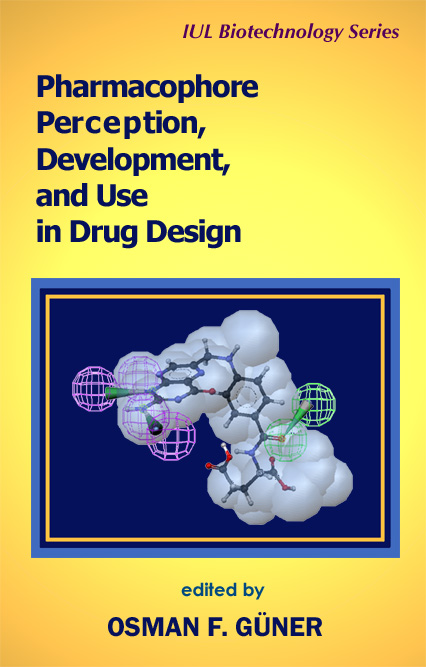

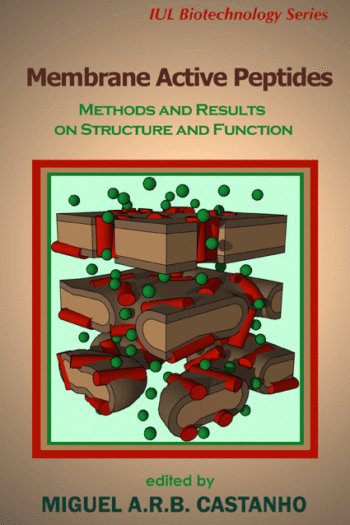
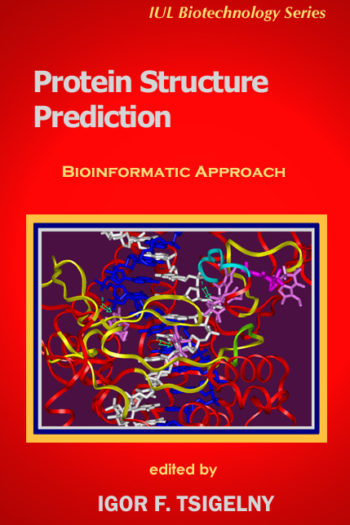
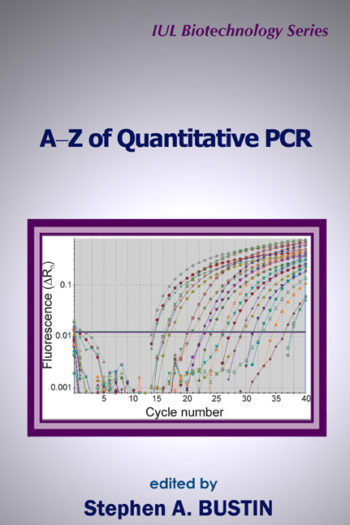


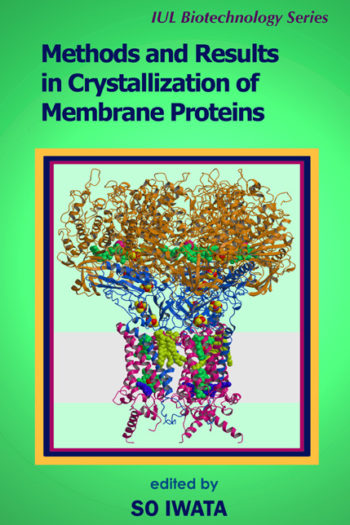

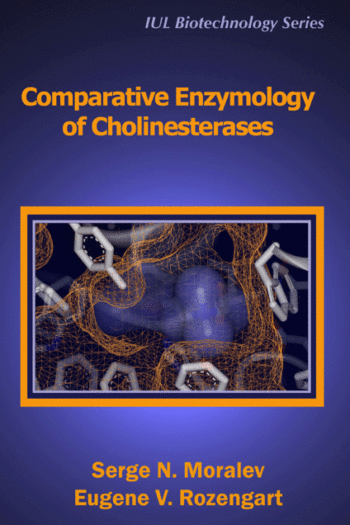
Robert S. Pearlman, Ph.D. –
Chair in Pharmacy and Director, Laboratory for Molecular Graphics and Theoretical Graphics, College of Pharmacy, University of Texas
This unique volume, focused on pharmacophore perception and applications, could not have been published at a more opportune time. Recent advances in combinatorial chemistry and high-throughput screening accentuate the importance of computer-assisted drug design (CADD) strategies and, in many respects, pharmacophore perception and the use of perceived pharmacophores comprise the basis of all CADD methods.
The Editor has ensured that this book will appeal to a very broad audience. His own Introduction coupled with chapters by the pioneers in pharmacophore perception provide a clear perspective, which enables both novices and experts to appreciate the state-of-the-art perception methods described in subsequent chapters. He has also included chapters discussing applications ranging from qualitative (SAR) methods such as 3D searching and other forms of database mining to quantitative (QSAR) methods such as CoMFA and receptor-ligand docking scores. The two parts on analog-based and receptor-based pharmacophores correspond to the two fundamental approaches to CADD: ligand-based and receptor-based design.
The discussions of background material and current methods, coupled with a prospective discussion of future directions, will make this book a valuable resource for both the research lab and the classroom, now and for years to come.
Peter W. Sprague, Ph.D. –
Vice President for Drug Discovery, Dyax Corp., Cambridge, Mass.
When large molecules bind to each other, certain strategically positioned functional groups provide most of the binding energy. If these pharmacophores can be identified and their interrelationships understood, drug design becomes much more rational. Furthermore, pharmacophores, can be presented in electronic form as individual or collections of, three dimensional objects…
There are several approaches toward pharmacophore detection and presentation under development today and many of them are covered in this book. Some of these remain too complicated for general use, but there is a trend toward methods that are technically sophisticated, yet understandable and operationally simple enough to appeal to all drug development scientists. With these, we are on track toward providing computational methods that will be as enabling for drug design as NMR techniques and software have been for drug synthesis.